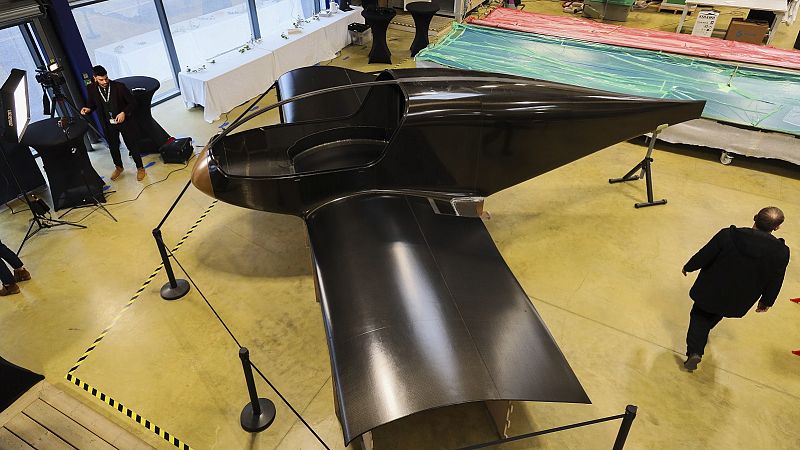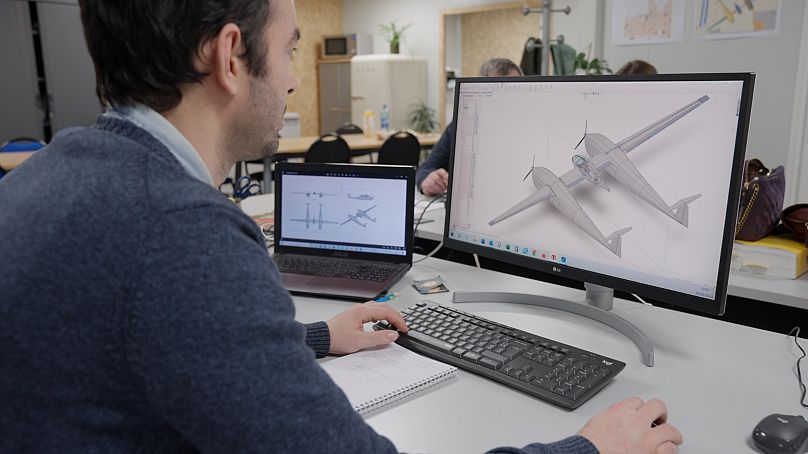The European hydrogen-powered plane that will attempt a non-stop flight around the world

From a workshop on France's Atlantic coast, aviation pioneer Bertand Piccard and partners are feverishly ramping up preparations for a flight that could completely change the course of aviation.
When Piccard spearheaded a much-hyped flight around the world in a plane powered by sunlight a decade ago, it raised awareness about climate change but held little promise of revolutionising air travel.
Now, the 66-year-old Swiss adventurer behind Solar Impulse is aiming higher, in hopes of heading toward greener commercial flight than that of fossil fuel-powered planes today - this time using super-cold liquid hydrogen.
Climate Impulse is a project that was started last February to fly a two-seater plane around the globe non-stop over nine days fueled by what's known as green hydrogen.
That's hydrogen split out of water molecules using renewable electricity through a process called electrolysis.
The Climate Impulse team, whose backers include Airbus and a science incubator called Syensqo (pronounced "science-co") born from Belgian pharmaceuticals company Solvay, presented its first-year progress to journalists this week in Les Sables d’Olonne, an oceanside town better known as host to the Vendee Globe round-the-world sailing race.
When is Climate Impulse due to get airborne?
First test flights are planned next year, but the grueling round-the-world trip is set for 2028. Made with lightweight composites, the plane is dependent on several untested innovations and is far from a sure bet.
Piccard says a major airplane manufacturer wouldn't take on the risk of producing a prototype such as Climate Impulse in case it fails.
"It’s my job to be a pioneer," he said in an interview. "We have to show it’s possible, then it’s a big incentive for the others to continue".
Even if the project is successful, experts say green hydrogen-powered flight on a commercial scale would be decades away at best. The project has lured tens of millions of euros of investment, and the team of dozens of staffers is growing.
The solar-powered plane was a technological feat in 2015, but wasn't scalable, said Climate Impulse engineer and co-pilot Raphael Dinelli. Limited in range, that plane had to make more than a dozen stops on its trip around the world.
Climate Impulse is supposed to take off unassisted, fly some 40,000 km (about 25,000 miles) around Earth along the Equator and return to its starting point with no mid-air refueling - and with no stops at all.
How does Climate Impulse fly?
The controlled release of liquid hydrogen from ultra-insulated tanks under the airplane's wings produces energy that seeps into the membrane of a fuel cell that powers the plane.
"The plane has the wingspan of an Airbus 320: 34 m (about 110 ft). It weighs 5-1/2 tons and it flies at 180 km/h — that means 100 knots at 10,000 ft (3,000 m) altitude," Piccard said on Thursday.
One aim is to draw on energy from the "turbulence section" of the atmosphere, which airlines could also use one day to help save fuel, he said.
Because it's hydrogen, the only emissions will be water vapor. Still, outside experts caution that the environmental impact of such water-vapor "contrails" remains unknown in a real-world or large-scale scenario.
The International Energy Agency says air travel is responsible for about 2 per cent of global emissions of carbon dioxide.
Hydrogen has been used in flights for decades but as a gas, not a liquid. Use of liquid hydrogen will take time to scale up. Fossil fuels, which are cheaper and more efficient, still produce most hydrogen today.
Many governments want to produce more green hydrogen, but for now, the world can’t make enough clean electricity for power needs on land, let alone to generate enough for wide-scale use by planes in the air.
What happens next?
In the last year, the team has built the cockpit shell, started building the wing spar, and finalized interior components. They include swivel seats, a bunk and a stationary bicycle-like workout system to promote blood circulation for the co-pilots who will be cramped in a small cockpit in low-oxygen conditions over the nine days.
The hardest parts await.
Tests are planned this year on the fuel cells and propulsion systems, to see if the electric motor, propeller and batteries could work for an initial fully-electric flight phase.
The trickiest part is to regulate the flow of liquid hydrogen to ensure efficient consumption over the longest range possible, Dinelli said.
Another challenge: the liquid hydrogen must be maintained at -253 degrees Celsius (-423 Fahrenheit), or nearly absolute zero. Construction of a leak-proof tank is essential.
Liquid hydrogen is highly flammable, so any seepage could have devastating results.
Is there a future for green hydrogen-powered flight?
Liquid hydrogen, until now, has perhaps most prominently been known as a propellant to blast rockets into space.
Aviation’s share of carbon emissions is relatively small, but growing faster than in any other industry because development of electric-powered planes trails far behind electric cars and trucks on the ground.
Batteries are heavy in EVs on roads today, and keeping down battery weight in planes will be crucial for electric-powered flight.
"We have not had a 'Tesla moment' in aviation yet," said Nikhil Sachdeva, an expert in how the aviation sector can transition to more climate-friendly technologies at consulting firm Roland Berger.
"Hydrogen has the potential to be that for aviation, which is why it’s worth doing this right".
Using super-cold liquid hydrogen is "extraordinarily difficult, and we can barely do it for a few minutes right now. And here we’re talking about doing it safely for hours," Sachdeva said.
But Solar Impulse faced pessimism too, he added, and Piccard's team has "proven it can do what people would consider impossible".
Today


